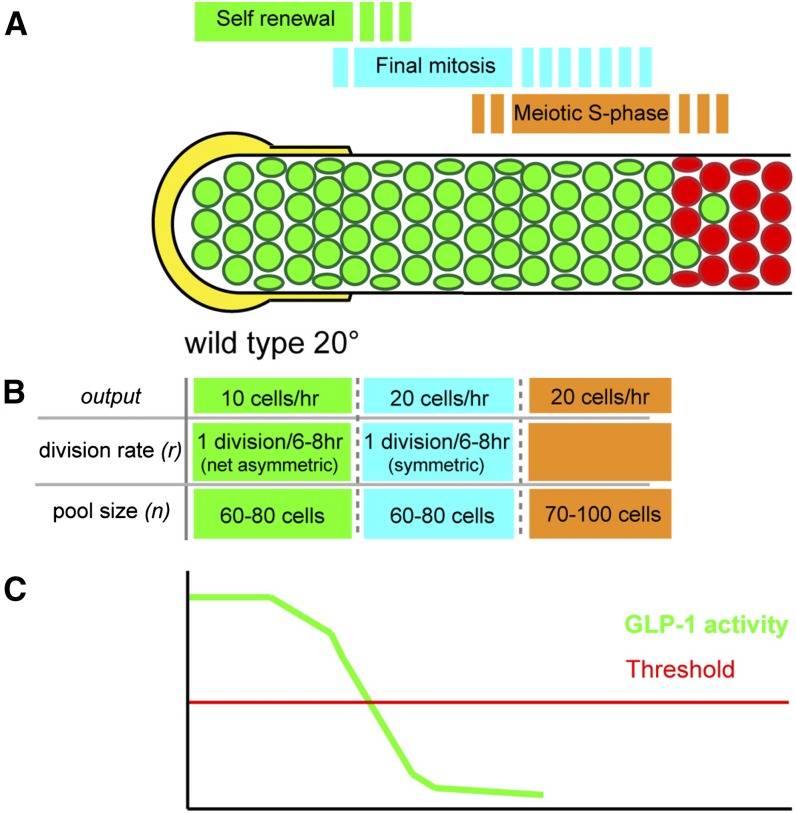Figure 10.
Model of proliferative zone composition and dynamics for the wild-type adult hermaphrodite. The proliferative zone in wild type is modeled based on our findings from analysis of meiotic entry behavior and mitotic cell cycle properties of germ cells following loss of GLP-1 activity (see text for details), which likely correspond to loss of the activity of the downstream transcriptional targets of GLP-1 signaling. The proliferative zone contains three pools (A and B), self-renewing stem cells (green) at the distal end, cells undergoing the final mitotic division (teal), and cells in meiotic S-phase (orange), which exist in partially overlapping regions (A). From measured proliferative zone output and division rate (r) in wild type at 20°, and the predicted behaviors of the cells in the three pools, the size of each pool can be estimated (B). Estimates for output and division rate are taken from Fox et al. (2011). As stem cell (pool 1) daughters progress proximally and escape the influence of the DTC plexus, they pass below a hypothesized threshold of GLP-1 activity (C), which results in loss of self-renewal activity, completion of the ongoing mitotic cell cycle (pool 2), and then meiotic S-phase (pool 3).

